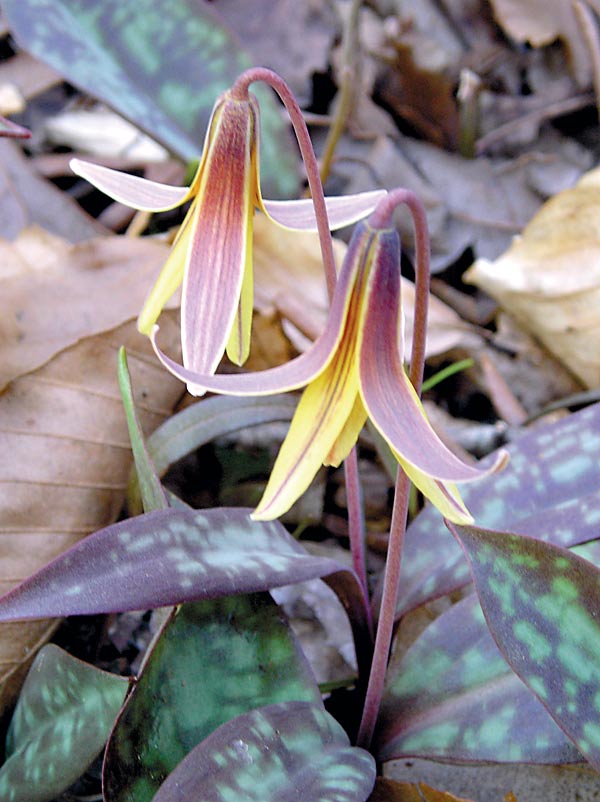Don’t Miss the Spring Ephemerals
 You have only a couple of weeks to catch the fleeting Trout Lily. Photo by Dave Otto
You have only a couple of weeks to catch the fleeting Trout Lily. Photo by Dave Otto
By Ken Moore
Flora Columnist
Some of our most beautiful woodland flowers are called spring ephemerals because their visible presence is fleetingly brief. They emerge from the forest floor in the chilly late winter to take advantage of the full sunlight that’s absent once the forest canopy is in full leaf.
By mid-April, some of these early risers will have flowered, made fruit, dispersed seed and returned to dormancy. The Trout Lily is a classic spring ephemeral. I failed to interrupt my busy indoor pace a few years ago and I missed the pageantry of this little woodland lily. That had a dramatic impact on me. I no longer take lightly the passing of seasons. The budding, flowering, leafing, fruiting and return to dormancy of plants are cherished as special separate annual occurrences.
The fleeting presence of the Trout Lily makes me want to linger over it – quietly hoping I will be privileged to see it again next year. I saw some in flower this past weekend down along the Rocky River on Triangle Land Conservancy’s White Pines Preserve south of Pittsboro. Dave Otto photographed some early ones this past week down along Bolin Creek in Carrboro.
If you are going to catch them this year, you will have to get out there soon. You can’t miss them. In some places like the Botanical Garden, the Adams’ Tract and the several local Triangle Land Conservancy preserves, they are literally carpeting the forest floor along trails through the low woods and leading upslope from the creek bottoms.
Light colored speckles on the green leaves most likely explain the common name, Trout Lily. Perhaps we should call it Speckled Trout Lily. That little golden-yellow flower with three sepals and three petals, looking like six similar petals, is a true lily. Down on hands and knees, take a closer look at the swollen triangular-shaped capsules at the ends of the stems where the flowers occurred. By the end of March, when the plant has just about disappeared for the year, that lily capsule will have deposited its seeds for dispersal by ants along the forest floor.
Some folks call this lily Dogtooth Violet and they are passionate about their common name. I don’t know the origin of this one; it is definitely not a violet, but I can understand how some imaginative soul may have likened each of those six petals to a canine’s tooth. Now use your imagination when viewing the burgundy colored stamens protruding from the petals. What do you think of Yellow Adder’s Tongue as another name for Trout Lily? Simply using the official Latin name, Erythronium americanum, is an easier option.
You will see many other woodland flowers close to the ground during the next couple of weeks. Be particularly on the lookout for one called Pennywort, Obolaria virginica. It is seldom seen because it remains hidden a few inches above the leaf litter. Only a keen eye will spot this diminutive wildflower in the Gentian family. Visit Dave Otto’s Bolin Creek photo exhibit, continuing through March in Carrboro’s Town Hall, to view a spectacular image of the Pennywort. When you see it, remember that in reality it is only a couple of inches tall. If you ever find one, you’ll never forget it. But you have to go walking in the woods to find it.
Special appreciation to Dave Otto for this week’s photos.
Email Ken Moore at flora@carrborocitizen.com. Find previous Ken Moore Citizen columns at The Annotated Flora (carrborocitizen.com/flora).


Comments are closed.